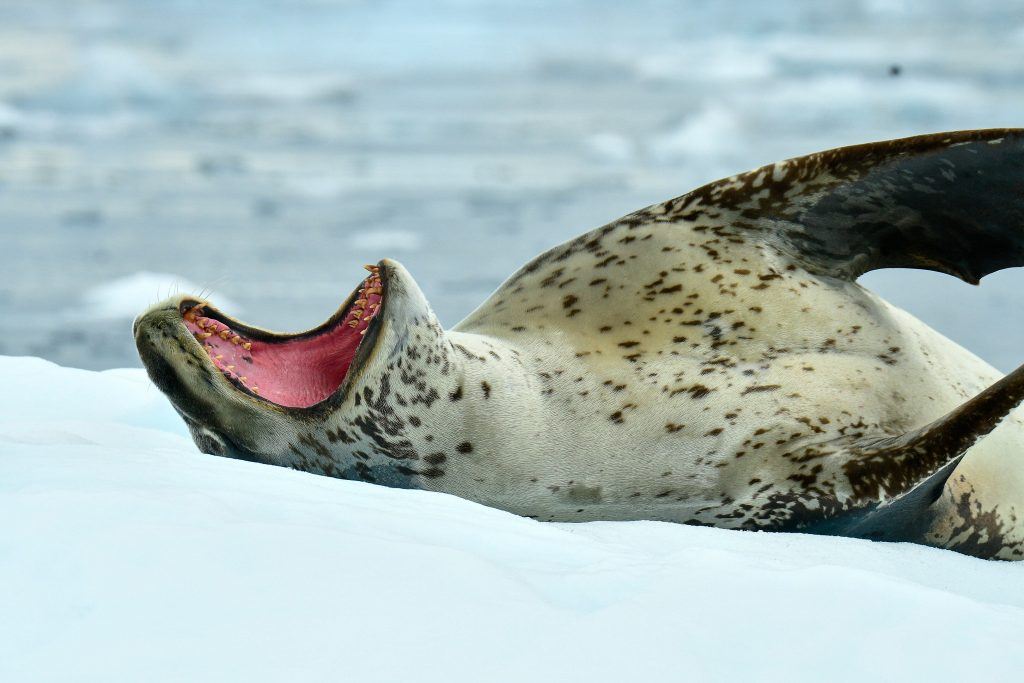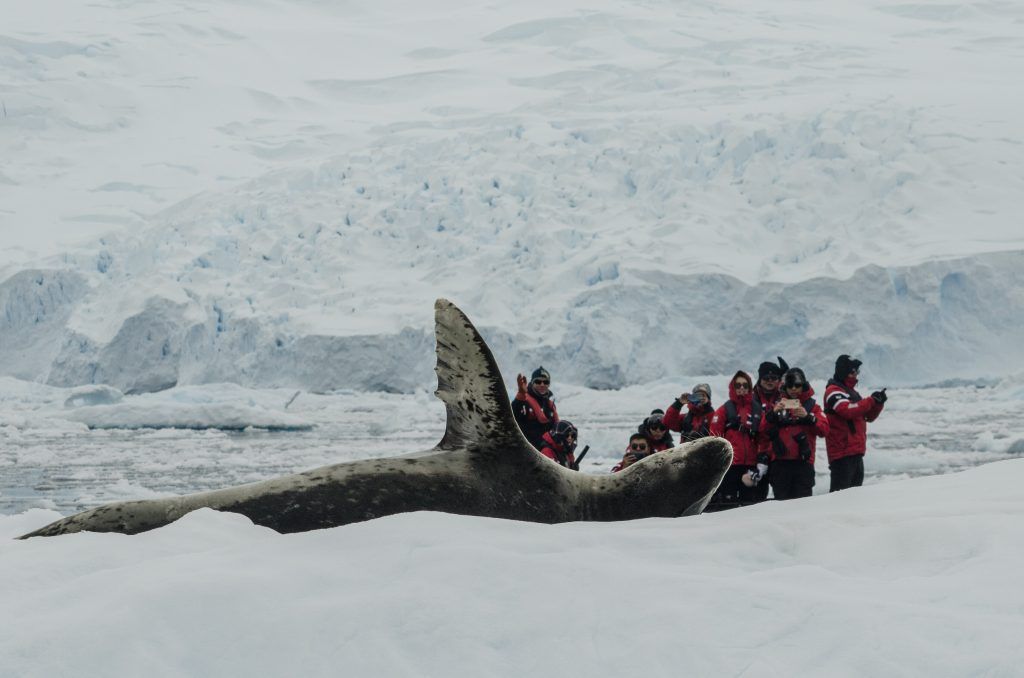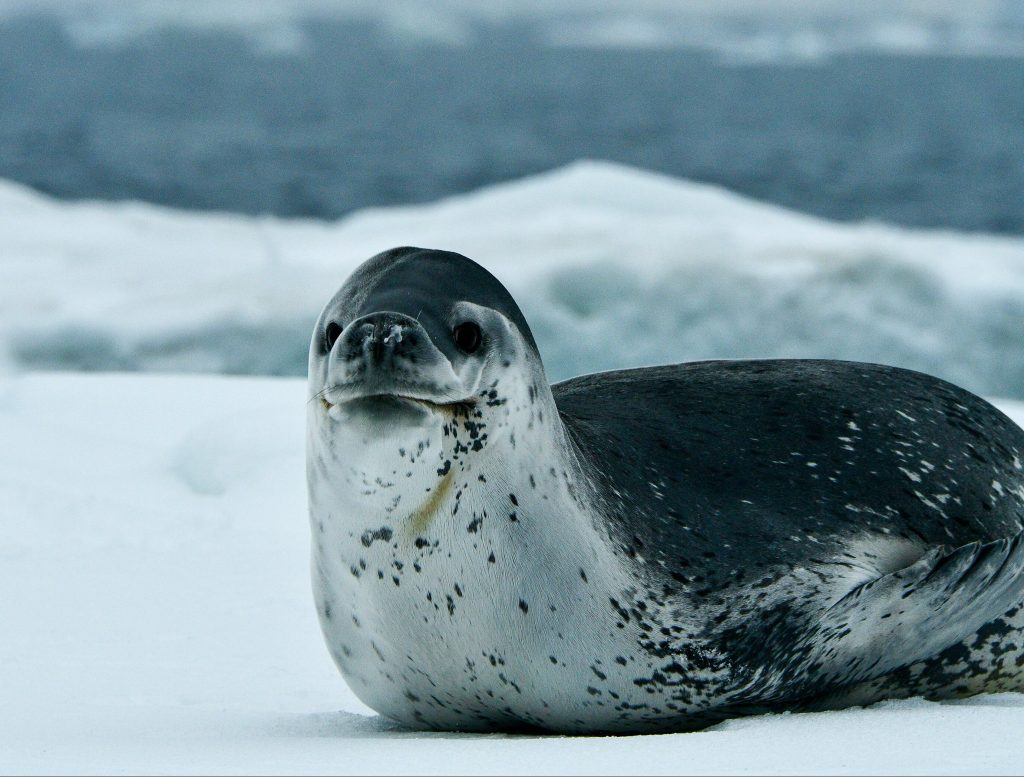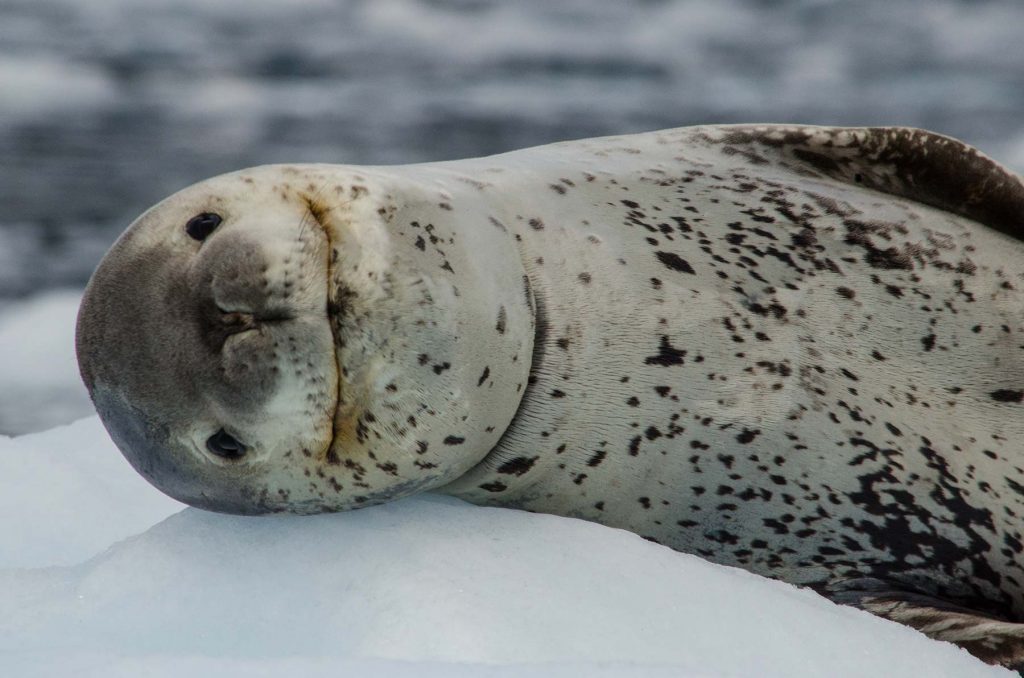Interesting Facts About Leopard Seals

Introducing the Leopard Seal- one of Antarctica’s top predators and most fascinating and forbidding creatures of the seal species. While Leopard Seals are often encountered on our voyages, these surprisingly agile animals are a coveted wildlife sighting. Keep your camera at the ready and enjoy identifying this spotted hunter that lazes on ice, chases penguins, and yawns widely to show you its impressively sharp teeth.
How a Leopard Seal Got its Name
‘Hydrurga leptonyx’ is the Latin name for leopard seal. They are aptly named Leopard Seals or ‘Sea Leopard’ due to their black-spotted coats and predatory nature. They are slender and powerful creatures that have long canine teeth for grabbing prey.
Leopard Seals are Solitary Creatures
Leopard Seals prefer their ‘alone time’ as they do not play well with others. Except for breeding periods, these seals are mostly seen on their own, lounging on floe ice or diving into the water to chase their next meal.

They are the 3rd Largest Polar Pinniped
Following Elephant Seals and Walruses, Leopard Seals are the 3rd largest pinniped. They have long serpent-like bodies with a large head and huge foreflippers. Though streamlined in appearance, these creatures can reach up to 1,300 pounds and 10 feet long, with the females being the larger of the two sexes.
They are Not Picky Eaters
The diet of a Leopard Seal consists mainly of krill, though they also hunt (and toy with) penguins. Interestingly enough, they don’t eat all parts of the penguins, leaving the skeleton, feet, and head. They will wait near ice shelves to snatch birds or fish, with larger seals even devouring smaller, weaker seals. When encountering Leopard Seals, we follow strict distancing measures as there has been one documented case of an attack on a human. These animals are always treated with the utmost caution.

Female Seals Are Known to Have ‘Delayed Implantation’
As they are so elusive, scientists have found it difficult to learn about their reproductive behaviors. What we do know is that females are the first to reach sexual maturity while males take a little longer. It can take several months for an egg to reach fertilization, and this ‘delayed implantation’ ensures that pups are born during a time when it’s more likely to survive. Females usually give birth once a year to one pup after a pregnancy period of up to 240 days.
Leopard Seals Have Only One Natural Predator
The only natural predator of the Leopard Seal is Orca (Killer Whales). They can swim up to 23mph (37kph) making them fast enough to launch themselves out of the water and onto ice or land to avoid being caught.

Other Fun Facts About Leopard Seals:
- Their Latin name translates to “slender-clawed water worker”
- Their average life span is about 25 years
- Able to stay underwater for up to 15 minutes at a time
- There is a fascinating true story about a photographer who encountered a Leopard Seal underwater and instead of attacking him, the seal repeatedly brought him live penguins in an attempt to try to teach him how to hunt
- Leopard Seals ‘smile’. The edges of their mouth turn upward, creating the impression of a smile (or menacing grin)
- These amazing creatures are extremely vocal and sing underwater. Since they breed in water, it’s only natural that they call out in search of a mate
Interested in seeing these awesome creatures first-hand for yourself?
Reach out to our teamat any time with your questions or inquiries!
